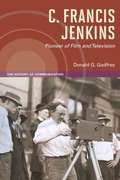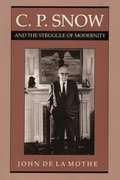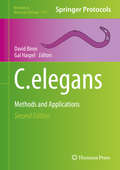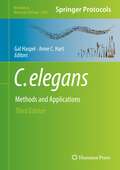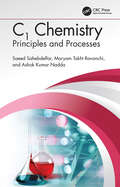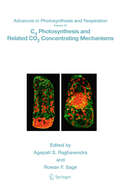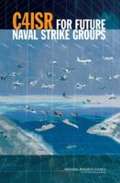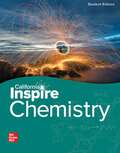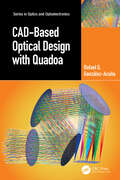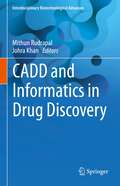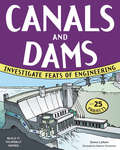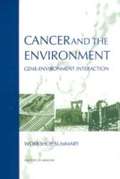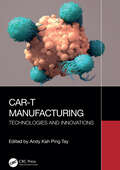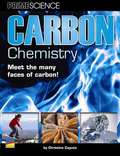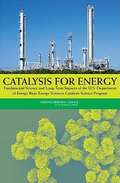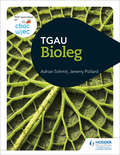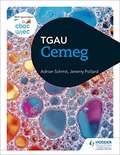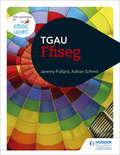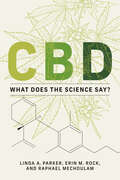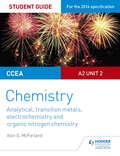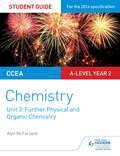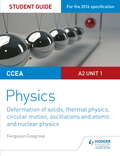- Table View
- List View
C. Francis Jenkins, Pioneer of Film and Television
by Donald G. GodfreyThis is the first biography of the important but long-forgotten American inventor Charles Francis Jenkins (1867-1934). Historian Donald G. Godfrey documents the life of Jenkins from his childhood in Indiana and early life in the West to his work as a prolific inventor whose productivity was cut short by an early death. Jenkins was an inventor who made a difference. As one of America's greatest independent inventors, Jenkins's passion was to meet the needs of his day and the future. In 1895 he produced the first film projector able to show a motion picture on a large screen, coincidentally igniting the first film boycott among his Quaker viewers when the film he screened showed a woman's ankle. Jenkins produced the first American television pictures in 1923, and developed the only fully operating broadcast television station in Washington, D.C. transmitting to ham operators from coast to coast as well as programming for his local audience. Godfrey's biography raises the profile of C. Francis Jenkins from his former place in the footnotes to his rightful position as a true pioneer of today's film and television. Along the way, it provides a window into the earliest days of both motion pictures and television as well as the now-vanished world of the independent inventor.
C. P. Snow and the Struggle of Modernity
by John de la MotheThe condition of modernity springs from that tension between science and the humanities that had its roots in the Enlightenment but reached its full flowering with the rise of twentieth-century technology. It manifests itself most notably in the crisis of individuality that is generated by the nexus of science, literature, and politics, one that challenges each of us to find a way of balancing our personal identities between our public and private selves in an otherwise estranging world. This challenge, which can only be expressed as "the struggle of modernity," perhaps finds no better expression than in C. P. Snow. In his career as novelist, scientist, and civil servant, C. P. Snow (1905-1980) attempted to bridge the disparate worlds of modern science and the humanities. While Snow is often regarded as a late-Victorian liberal who has little to say about the modernist period in which he lived and wrote, de la Mothe challenges this judgment, reassessing Snow's place in twentieth-century thought. He argues that Snow's life and writings-most notably his Strangers and Brothers sequence of novels and his provocative thesis in The Two Cultures and the Scientific Revolution-reflect a persistent struggle with the nature of modernity. They manifest Snow's belief that science and technology were at the center of modern life.
C. elegans: Methods and Applications (Methods in Molecular Biology #1327)
by David Biron Gal HaspelThe aim of this volume is to provide a step-by-step guide for implementing a selection of novel techniques in the lab. Each protocol in this volume is presented as a standalone chapter, specifically geared towards addressing practical needs without presuming prior knowledge of the technique at hand. Written in the highly successful Methods in Molecular Biology series format, chapters include introductions to their respective topics, lists of the necessary materials and reagents, readily reproducible laboratory protocols, and key tips on troubleshooting and avoiding known pitfalls. Authoritative and practical, C. elegans: Methods and Applications, Second Edition aims to ensure successful results in the further study of this dynamic field.
C. elegans: Methods and Applications (Methods in Molecular Biology #2468)
by Gal Haspel Anne C. HartThis detailed new edition provides a guide for implementing a selection of novel techniques utilizing the pioneering organism, Caenorhabditis elegans, a vital discovery engine for the rules of life, from molecules and genes, through cellular physiology, metabolism and aging, neurobiology and behavior, to individuality and interaction with the environment. Beginning with two chapters offering practical advice for setting up research programs with C. elegans, either for a new research group or for a short-term project such as a teaching laboratory, the volume continues with numerous hands-on methodologies. Written for the highly successful Methods in Molecular Biology series, chapters include introductions to their respective topics, lists of the necessary materials and reagents, step-by-step, readily reproducible laboratory protocols, and tips on troubleshooting and avoiding known pitfalls. Authoritative and up-to-date, C. elegans: Methods and Applications, Third Edition offers the kind of clear guidance that will serve all researchers working with these vital and dynamic organisms.
C1 Chemistry: Principles and Processes
by Ashok Kumar Nadda Saeed Sahebdelfar Maryam Takht RavanchiVolatility of crude oil prices, depleting reservoirs and environmental concerns have stimulated worldwide research for alternative and sustainable sources of raw materials for chemicals and fuels. The idea of using single-carbon atom molecules as chemical building blocks is not new, and many such compounds have been techno-economically studied as raw materials for fuels. Nevertheless, unifying the scientific and technical issues under the topic of C1 chemistry is not as easy as it may appear. C1 Chemistry: Principles and Processes provides a comprehensive understanding of the chemical transformation from molecular to commercial plant scales and reviews the sources of C1 molecules, their conversion processes and the most recent achievements and research needs. This book: Describes the latest processes developments and introduces commercial technologies Covers a wide range of feedstocks, including greenhouse gases and organic wastes Details chemistry, thermodynamics, catalysis, kinetics and reactors for respective conversions Includes preparation and purification of C1 feedstocks, C1 molecule coupling reactions and process technologies for each C1 conversion reaction Considers environmental impacts and sustainability This book will be of interest to a wide range of researchers, academics, professionals and advanced students working in the chemical, environmental and energy sectors and offers readers insights into the challenges and opportunities in the active field of C1 chemistry.
C4 Photosynthesis and Related CO2 Concentrating Mechanisms (Advances in Photosynthesis and Respiration #32)
by Agepati S. Raghavendra Rowan F. SageThe C4 pathway of photosynthesis was discovered and characterized, more than four decades ago. Interest in C4 pathway has been sustained and has recently been boosted with the discovery of single-cell C4 photosynthesis and the successful introduction of key C4-cycle enzymes in important crops, such as rice. Further, cold-tolerant C4 plants are at the verge of intense exploitation as energy crops. Rapid and multidisciplinary progress in our understanding of C4 plants warrants a comprehensive documentation of the available literature. The book, which is a state-of-the-art overview of several basic and applied aspects of C4 plants, will not only provide a ready source of information but also triggers further research on C4 photosynthesis. Written by internationally acclaimed experts, it provides an authoritative source of progress made in our knowledge of C4 plants, with emphasis on physiology, biochemistry, molecular biology, biogeography, evolution, besides bioengineering C4 rice and biofuels. The book is an advanced level textbook for postgraduate students and a reference book for researchers in the areas of plant biology, cell biology, biotechnology, agronomy, horticulture, ecology and evolution.
C4isr For Future Naval Strike Groups
by National Research Council of the National AcademiesThe Navy has put forth a new construct for its strike forces that enables more effective forward deterrence and rapid response. A key aspect of this construct is the need for flexible, adaptive command, control, communications, computers, intelligence, surveillance, and reconnaissance (C4ISR) systems. To assist development of this capability, the Navy asked the NRC to examine C4ISR for carrier, expeditionary, and strike and missile defense strike groups, and for expeditionary strike forces. This report provides an assessment of C4ISR capabilities for each type of strike group; recommendations for C4ISR architecture for use in major combat operations; promising technology trends; and an examination of organizational improvements that can enable the recommended architecture.
CAD-Based Optical Design with Quadoa (Series in Optics and Optoelectronics)
by Rafael G. González-AcuñaIn CAD-Based Optical Design with Quadoa, we explore how optical design entails evaluating application requirements and creating optical systems specifically engineered to meet the exact needs of optical instruments. This extensive system may include optics, light sources, sensors, electronic boards, display devices, and other components. Primarily, optical design focuses on determining the shapes, positions, and materials of lenses and mirrors to ensure the optical system adheres to indicated criteria and specifications. To meet specific requirements, lens designers must use optical design software as an aid for their challenging task.Most of the mentioned optical design programs are based on the idea of a spreadsheet that contains the information on each surface, radius, thickness, materials, and position among other parameters. This paradigm has its positive aspects and negative aspects. But optical design is a field under constant evolution and new ways to design optical systems are emerging. In this book, we are going to construct, optimize, and analyze optical systems under the fresh paradigm of Computer-aided design (CAD) with the help of Quadoa Optical CAD, a novel optical design software. Within the chapters of the book, we are going to see why this paradigm can be very useful in designing optical systems in comparison with the one proposed by spreadsheets.The purpose of this book is to teach optical design with a fresh and reliable tool, Quadoa Optical CA. This book mixes the classical books in optical design and a manual of Quadoa Optical CAD. The purpose of this blend is to give readers enough knowledge to start a practical optical design, with solid theory and robust tools in Quadoa Optical CAD.
CADD and Informatics in Drug Discovery (Interdisciplinary Biotechnological Advances)
by Johra Khan Mithun RudrapalThis book updates knowledge on recent advances in computational, biophysical and bioinformatics tools/techniques and their practical applications in modern drug design and discovery paradigm. It also encompasses fundamental principles, advanced methodologies and applications of various CADD approaches including several cutting-edge areas; presenting recent developments covering ongoing trends in the field of computer-aided drug discovery. Having contributions by a global team of experts, the book is expected to be an ideal resource for drug discovery scientists, medicinal chemists, pharmacologists, toxicologists, phytochemists, biochemists, biologists, R&D personnel, researchers, students, teachers and those working in the field of drug discovery. It will fill the knowledge gaps that exist in the current CADD approaches and methodologies/ protocols being widely used in both academic and research practices. Further, a special focus on current status of various computational drug design approaches (SBDD, LBDD, de novo drug design, pharmacophore-based search), bioinformatics tools and databases, computational screening and modeling of phytochemicals/natural products, artificial intelligence and machine learning, and network pharmacology and systems biology would certainly guide researchers, students or readers to conduct their research in the emerging area(s) of interest. It is also expected to be highly beneficial to various stakeholders working in the pharmaceutical and biotechnology industries (R&D), the academic as well as research sectors.
CANALS AND DAMS
by Andrew Christensen Donna LathamCanals and Dams: Investigate Feats of Engineering invites children ages 9 and up to explore the innovation and physical science behind the amazing waterways and barriers our world depends on. Trivia and fun facts illustrate engineering ingenuity and achievements from ancient aqueducts to the Suez Canal and the Hoover Dam. Readers will discover that engineers and builders alike put their lives on the line to advance civilization, experiencing triumphs and tragedies in building big. Through dazzling success and heartbreaking failure, they developed increasingly sophisticated tools and building methods.Activities and projects encourage children to explore the engineering process and to try, try again through trial and error. They'll engage in hands-on explorations of buoyancy, Newton's third law of motion, and forces that push and pull structures. They'll create a paper-cup zip line, build an arch, and simulate a tsunami, while experimenting with gravity, hydroponics, and velocity. In Canals and Dams: Investigate Feats of Engineering, children will gain an appreciation for the important field of engineering as they develop their own building skills.
CANCER and the ENVIRONMENT: GENE-ENVIROMENT INTERACTION
by Medicine Roundtable on Environment Health Sciences ResearchThe Roundtable on Environmental Health Sciences, Research, and Medicine wanted to address the link between environmental factors and the development of cancer in light of recent advances in genomics. They asked what research tools are needed, how new scientific information can be applied in a timely manner to reduce the burden of cancer, and how this can be flexible enough to treat the individual.
CAR-T Manufacturing: Technologies and Innovations
by Andy Kah Ping TayThis edited volume describes innovations in all steps of the CAR-T manufacturing chain. These vital descriptions will help practitioners to overcome current challenges during the process and vastly reduce costs and enable timely and accessible administration of CAR-T therapy to patients.The book provides readers with information on key fundamental concepts of CAR-T manufacturing in areas such as cell selection, cell activation, cell transfection, cell expansion, genetic engineering, and quality control. In each chapter, a particular technological field in the CAR-T manufacturing chain is discussed. Each chapter will include an introduction to the importance of a particular technology for cell manufacturing, comparisons of state-of-the-art methods, and discussions on respective emerging innovations. This exposes readers to a high-level view of the entire process while diving into details for each specific process step. Readers will be able to apply their knowledge to make changes at each step of the CAR-T manufacturing process to reduce the existing high costs and long production times, so that cancer patients globally can benefit from CAR-T therapy.This book is an invaluable resource for practitioners in CAR-T manufacturing who aim to improve their quality and efficiency while reducing time and costs. It is also useful for advanced undergraduate and graduate students who wish to gain a strong foundation for continuing research in the field or interacting with practitioners.
CATALYSIS FOR ENERGY: Fundamental Science and Long-Term Impacts of the U.S. Department of Energy Basic Energy Sciences Catalysis Science Program
by National Research Council of the National AcademiesThis book presents an in-depth analysis of the investment in catalysis basic research by the U.S. Department of Energy (DOE) Office of Basic Energy Sciences (BES) Catalysis Science Program. Catalysis is essential to our ability to control chemical reactions, including those involved in energy transformations. Catalysis is therefore integral to current and future energy solutions, such as the environmentally benign use of hydrocarbons and new energy sources (such as biomass and solar energy) and new efficient energy systems (such as fuel cells). Catalysis for Energy concludes that BES has done well with its investment in catalysis basic research. Its investment has led to a greater understanding of the fundamental catalytic processes that underlie energy applications, and it has contributed to meeting long-term national energy goals by focusing research on catalytic processes that reduce energy consumption or use alternative energy sources. In some areas the impact of the research has been dramatic, while in others, important advances in catalysis science are yet to be made.
CBAC TGAU Bioleg (My Revision Notes (PDF))
by Jeremy Pollard Adrian SchmitExam Board: WJECLevel: GCSESubject: BiologyFirst Teaching: September 2016First Exam: June 2018Welsh edition.Develop your scientific thinking and practical skills with resources that stretch and challenge all levels within the new curriculum produced by a trusted author team and the established WJEC GCSE Science publisher. - Prepare students to approach exams confidently with differentiated Test Yourself questions, Discussion points, exam-style questions and useful chapter summaries.- Provide support for all required practicals along with extra tasks for broader learning. - Support the mathematical and Working scientifically requirements of the new specification with opportunities to develop these skills throughout. - Supports separate science Biology and also suitable to support the WJEC GCSE Science (Double Award) qualification.
CBAC TGAU Bioleg (WJEC GCSE Biology Welsh-language edition)
by Jeremy Pollard Adrian SchmitExam Board: WJECLevel: GCSESubject: BiologyFirst Teaching: September 2016First Exam: June 2018Welsh edition.Develop your scientific thinking and practical skills with resources that stretch and challenge all levels within the new curriculum produced by a trusted author team and the established WJEC GCSE Science publisher. - Prepare students to approach exams confidently with differentiated Test Yourself questions, Discussion points, exam-style questions and useful chapter summaries.- Provide support for all required practicals along with extra tasks for broader learning. - Support the mathematical and Working scientifically requirements of the new specification with opportunities to develop these skills throughout. - Supports separate science Biology and also suitable to support the WJEC GCSE Science (Double Award) qualification.
CBAC TGAU Cemeg (WJEC GCSE Chemistry Welsh-language edition)
by Jeremy Pollard Adrian SchmitExam Board: WJECLevel: GCSESubject: ChemistryFirst Teaching: September 2016First Exam: June 2018Welsh edition.Expand and challenge your students' knowledge and understanding of Chemistry with this textbook that guides students through each topic within the new curriculum; produced by a trusted author team and the established WJEC GCSE Science publisher. - Test understanding and reinforce learning with differentiated Test Yourself questions, Discussion points, exam-style questions and useful chapter summaries.- Provide support for all required practicals along with extra tasks for broader learning. - Support the mathematical and Working scientifically requirements of the new specification with opportunities to develop these skills throughout. - Supports the separate sciene Chemisrty and is also suitable to support the WJEC GCSE Science (Double Award) qualification.
CBAC TGAU Cemeg (WJEC GCSE Chemistry Welsh-language edition)
by Jeremy Pollard Adrian SchmitExam Board: WJECLevel: GCSESubject: ChemistryFirst Teaching: September 2016First Exam: June 2018Welsh edition.Expand and challenge your students' knowledge and understanding of Chemistry with this textbook that guides students through each topic within the new curriculum; produced by a trusted author team and the established WJEC GCSE Science publisher. - Test understanding and reinforce learning with differentiated Test Yourself questions, Discussion points, exam-style questions and useful chapter summaries.- Provide support for all required practicals along with extra tasks for broader learning. - Support the mathematical and Working scientifically requirements of the new specification with opportunities to develop these skills throughout. - Supports the separate sciene Chemisrty and is also suitable to support the WJEC GCSE Science (Double Award) qualification.
CBAC TGAU Ffiseg (WJEC GCSE Physics Welsh-language edition)
by Jeremy Pollard Adrian SchmitExam Board: WJECLevel: GCSESubject: PhysicsFirst Teaching: September 2016First Exam: June 2018Welsh edition. Help students to apply and develop their knowledge and understanding of Physics with this textbook that builds mathematical skills, provides practical assessment guidance and support for all the required practicals. - Prepare students to approach exams confidently with differentiated Test Yourself questions, Discussion points, exam-style questions and useful chapter summaries.- Provide support for all required practicals along with extra tasks for broader learning. - Support the mathematical and Working scientifically requirements of the new specification with opportunities to develop these skills throughout. - Supports the separate science Physics and can be used for the WJEC GCSE Science (Double Award) qualification.
CBD: What Does the Science Say?
by Linda A. Parker Raphael Mechoulam Erin M. RockA comprehensive review of the scientific literature on the possible benefits of CBD, describing findings from both preclinical and human clinical studies.CBD (cannabidiol), a nonintoxicating compound derived from the cannabis plant, can be found in products ranging from lotion and smoothies to chewable gummies and pet treats. It&’s been promoted—but not always scientifically validated—as a treatment for medical conditions including psychosis, anxiety, pain, and even cancer. This book by three leading cannabis researchers looks at the science of CBD. It offers a comprehensive review of the scientific literature on the possible benefits of CBD, describing findings from both preclinical and human clinical studies. The authors report that the current CBD fad has some basis in preclinical animal research that indicates potential beneficial effects. Clinical studies, hampered by regulations governing research with cannabis, have lagged behind the basic animal research. The authors examine what research shows about chemical and pharmacological aspects of CBD and CBD&’s interaction with THC, the main psychotropic compound found in cannabis. They go on to review current state of knowledge about CBD&’s effectiveness in treating epilepsy, cancer, nausea, pain, anxiety, PTSD, depression, sleep disorders, psychosis, and addiction.
CCEA A Level Year 2 Chemistry Student Guide: Analytical, Transition Metals, Electrochemistry and Organic Nitrogen Chemistry
by Alyn G. McfarlandReinforce students' understanding throughout their course; clear topic summaries with sample questions and answers will improve exam technique to achieve higher gradesWritten by examiners and teachers, Student Guides:· Help students identify what they need to know with a concise summary of the topics examined in the AS and A-level specification· Consolidate understanding with exam tips and knowledge check questions· Provide opportunities to improve exam technique with sample graded answers to exam-style questions· Develop independent learning and research skills · Provide the content for generating individual revision notes
CCEA A Level Year 2 Chemistry Student Guide: Further Physical and Organic Chemistry
by Alyn G. McfarlandReinforce students' understanding throughout their course; clear topic summaries with sample questions and answers will improve exam technique to achieve higher gradesWritten by examiners and teachers, Student Guides:· Help students identify what they need to know with a concise summary of the topics examined in the AS and A-level specification· Consolidate understanding with exam tips and knowledge check questions· Provide opportunities to improve exam technique with sample graded answers to exam-style questions· Develop independent learning and research skills · Provide the content for generating individual revision notes
CCEA A-level Year 2 Physics Student Guide 3: A2 Unit 1
by Ferguson CosgroveReinforce students' understanding throughout their course; clear topic summaries with sample questions and answers will improve exam technique to achieve higher gradesWritten by examiners and teachers, Student Guides:· Help students identify what they need to know with a concise summary of the topics examined in the AS and A-level specification· Consolidate understanding with exam tips and knowledge check questions· Provide opportunities to improve exam technique with sample graded answers to exam-style questions· Develop independent learning and research skills · Provide the content for generating individual revision notes
